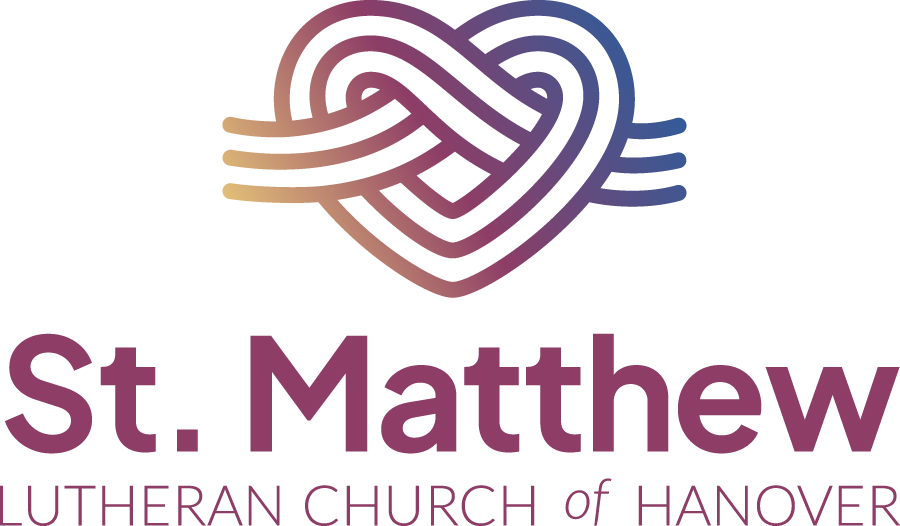St. Matthew History: 1837 – 1928
-
1837 Rev. Jacob Albert led the rearrangement of the sanctuary, adding a second floor and modernizing the entire building. He is remembered for his musical leadership and impassioned preaching during the revivals of 1842. In 1845, the Union Sunday Schools divided into separate schools, the Lutherans holding their school in the room under the Nave. A central part of the school was the Bible Class for teachers and officers that Pastor Albert conducted in various homes every Friday evening. He resigned in 1848.
-
1848 A professor in the Theological Seminary at Gettysburg, Rev. Charles A. Hay, served as Pastor for just thirteen months. He preached also at Wildasin’s school house near Dubs Church. He was the first pastor to begin a systematic registration of church statistics. In 1867, he was called again to teach at the seminary.
-
1851 Rev. D. P. Rosenmiller served six years amid opposition and interference. He also served Sherman’s Church, and led Dubs congregation to erect a house of worship. The old parsonage at the corner of Carlisle and Chestnut Streets was sold and a dwelling purchased at 55 Frederick St. The congregation finally was legally incorporated, with the charter naming it the “First Evangelical Lutheran Church of Hanover.” In 1857, Pastor Rosenmiller accepted a call to serve the Dubs Church.
-
1857 Rev. Monroe John Alleman was pastor during the Civil War. He revived church discipline and cleared indifferent members from the church rolls. In 1858, the charter was readopted after the name of the congregation had been changed to “St. Matthew’s Evangelical Lutheran Church.” When the need for an English-speaking congregation amicably led to the founding of St. Mark’s, Dr. Alleman resigned to become its Pastor in 1865.
-
1865 On February 11, St. Mark’s Lutheran Church was organized in the lecture room of St. Matthew with 47 charter members, all of whom came from St. Matthew. Rev. Samuel Yingling came in July and led the congregation to renewal and substantial growth. A fire on January 29, 1865, required prompt repairs, and other property improvements were made.
-
1877 Rev. J.C. Koller served St. Matthew nearly thirty years. In 1878-79, the third church building was torn down, except for the spire, and a new house of worship was erected. The cornerstone-laying was conducted in both English and German. In 1883-84, a new parsonage was built on the site of the old. Organizations formed included the Women’s Home and Foreign Missionary Society, Ladies’ Aid Society, and the Lutheran Alliance for Youth. The Lutheran “Common Service” for worship was introduced, systematic methods to secure financial support were adopted, and the Sunday School was incorporated, with a fund established for its library.
-
1886 Members in the eastern portion of Hanover formed the Mt. Carmel congregation, and in larger number, organized themselves into St. Paul’s, McSherrystown. Still other members affiliated with St. Paul’s, York St., incorporated in February of 1893.
-
1893 For St. Matthew’s 150th anniversary, Dr. Koller compiled a history that has served as a guide for all succeeding historians. He attributed the evident prosperity of the congregation under God’s grace to: conscientious catechetical instruction of youth, adherence to the doctrinal basis and scriptural practice of the Lutheran Church, loyalty to synodical authority and the larger church, uniform cooperation of the members in the various branches of church work, and the unqualified preaching of the Gospel of Jesus Christ as the “power of God unto human salvation.”
-
Since Dr. Koller’s synopsis was published, no similar narrative of the history of St. Matthew has yet been written.
-
1906 The congregation grew rapidly during the pastorate of Rev. A. M. Heilman. At Christmas 1916, J. Herbert Springer began 52 years of service as organist/choirmaster.
-
1917 While Rev. Ralph H. Bergstresser was Pastor, the congregation and Sunday School both adopted the duplex envelope system to assure a regular income. When the congregation outgrew its building, they decided to first build a new Nave on the adjoining vacant lot and to use the old building for Sunday School until a new unit could be built. Mr. Springer made plans for a large organ in the new church, which is now one of the world’s largest organs. The fifth and present church building, begun in 1922, was dedicated September 28, 1924. In April 1927, Pastor Bergstresser suffered fatal injuries in an automobile accident. Following his death, Dr. Harvey D. Hoover of the seminary at Gettysburg filled the pulpit for one year.
-
1928 Pastor Harry Hursh Beidleman served the rapidly growing congregation tirelessly for 28 years. A Sunday School Council was organized, and the school arranged into departments. The Sunday School assumed support of a missionary couple, Rev. and Mrs. John C. Perry, Jr., who served in India for nearly 30 years. A second Missionary Society for young women and an Usher’s League were organized.

